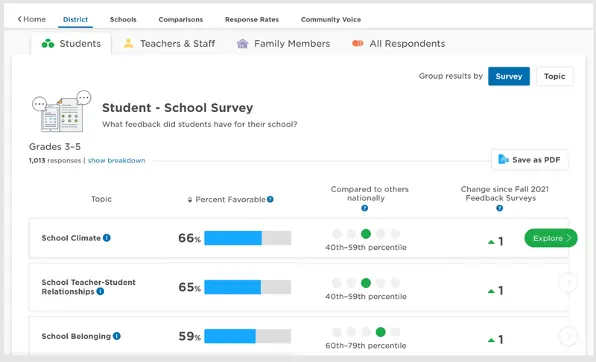-
Solutions
-
By District Priority
-
-
Products
-

AI Perceptions and Readiness Survey
Understand stakeholder priorities, familiarity, and readiness to use AI in schools.
-
Resources
-
Featured Resource

Panoramic 2026 Virtual Summit
Discover how educators and leaders are putting purpose behind AI to drive real improvements in attendance, literacy, and student supports.
-
Find Your State
-
-
Alabama
-
Alaska
-
Arizona
-
Arkansas
-
California
-
Colorado
-
Connecticut
-
Delaware
-
Florida
-
Georgia
-
Hawaii
-
Idaho
-
Illinois
-
Indiana
-
Iowa
-
Kansas
-
Kentucky
-
Louisiana
-
Maine
-
Maryland
-
Massachusetts
-
Michigan
-
Minnesota
-
Mississippi
-
Missouri
-
Montana
-
Nebraska
-
Nevada
-
New Hampshire
-
New Jersey
-
New Mexico
-
New York
-
North Carolina
-
North Dakota
-
Ohio
-
Oklahoma
-
Oregon
-
Pennsylvania
-
Rhode Island
-
South Carolina
-
South Dakota
-
Tennessee
-
Texas
-
Utah
-
Vermont
-
Virginia
-
Washington
-
West Virginia
-
Wisconsin
-
Wyoming
-
-
-
About Us
-
Impact
-
Get in Touch
-
Research-Based Education Tools You Can Trust
Panorama’s team of expert data scientists and researchers help imagine, design, and build research-based tools to improve student outcomes.

New Research Highlights the Correlation Between Student Perceptions and Chronic Absenteeism
Panorama's Data Science and Applied Research Team completed an extensive study using data from over 7,000 schools and 11 million student records.
Read the full report for new insights on how schools can address absenteeism.
.jpg?width=300&height=388&name=White%20Paper_%20Student%20Surveys%20and%20Chronic%20Absenteeism%20(1).jpg)
Panorama tools meet federal standards for evidence and impact
Panorama Student Success meets the funding requirements under the Every Student Succeeds Act (ESSA) standards for Level 2 and 4. In addition, Panorama Behavior Logging and Analytics meet ESSA level 4 standards.
LearnPlatform, a third-party evaluator, has validated the effectiveness of Panorama Student Success to meet ESSA level 2 evidence:
- Using Student Success was shown to significantly impact student learning
- Student gains of 6 percentile points in math and 8 percentile points in reading were associated with even modest use of Panorama
- Using Student Success to track interventions was associated with gains of 6 percentile points in math and 4 percentile points in reading scores
- And increased use of Student Success resulted in even greater gains
Download Level 2 evidence:
To meet ESSA Level 4 evidence:
- Panorama Student Success and Behavior Logging have detailed logic models informed by previous, high-quality research.
- Planning and research design currently underway for an ESSA Level 3 study
Download reports for Level 4 evidence:
%20(1).png)
Research-backed surveys grounded in survey science best practices
Panorama researchers developed our surveys through a rigorous process that prioritizes validity from the start.Our student surveys offer a research-backed means to inform the work of educators, policy makers, and researchers.
Download Panorama’s Reliability and Validity reports:

Our data scientists and researchers ground Panorama’s products in education data and social science
The team leverages evidence based practices, with student centered data science to help educators move from measurement to action. They apply their subject matter expertise to envision and improve Panorama tools.
Explore Selected Resources From Our Researchers
Blogs, Guides, & Op-Eds
The State of Chronic Absenteeism: What Millions of Students Tell Us About School Climate (Schaper, Coulter, Ugaddan, Woolf, 2024)
The Impact of Covid-19 Pandemic on Student Success (Moulton, 2023)
How To Measure Student Well-Being (Moulton, 2021)
On-Demand Webinars
Improving Your MTSS with an Effective Check-In/Check-Out Process (Schaper, 2023)
Catalyzing a Culture of Feedback Using Student Success (Kowalski, 2023)
Using Behavior Incident Reports to Teach Behavior (Schaper, 2023)
Ready to leverage research-based tools in your schools?

